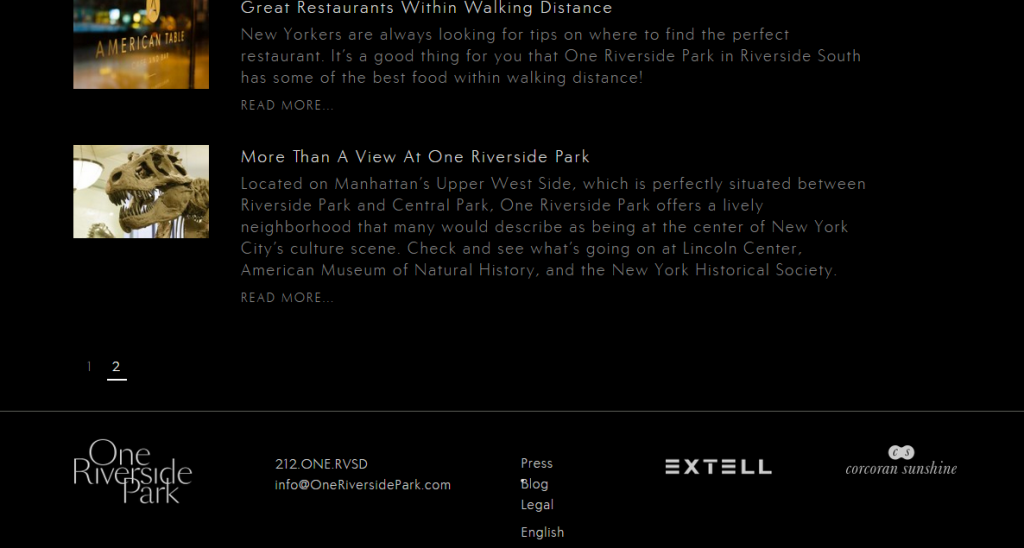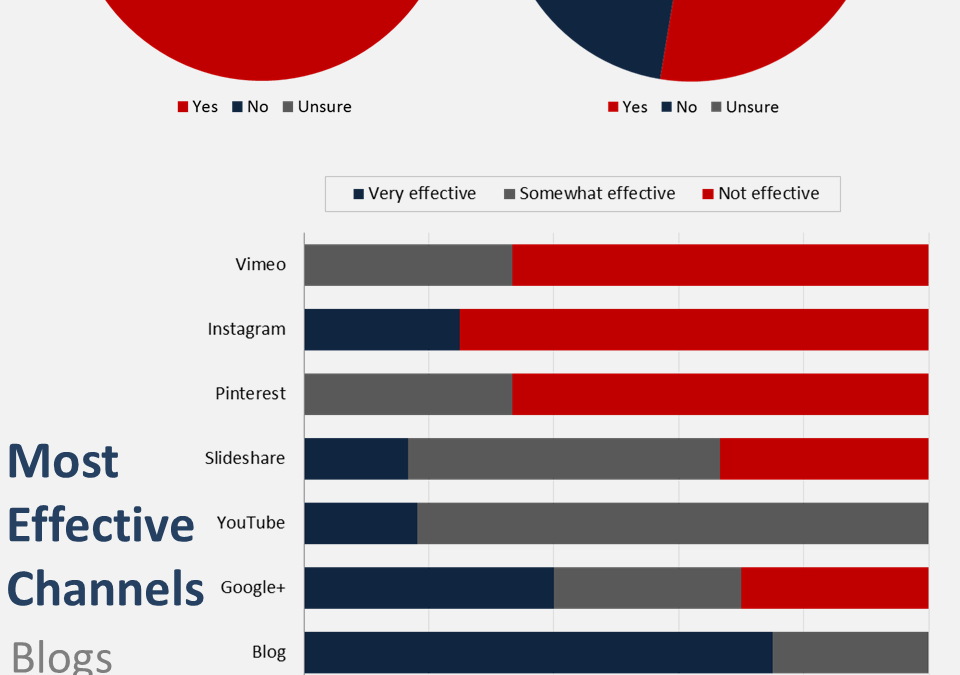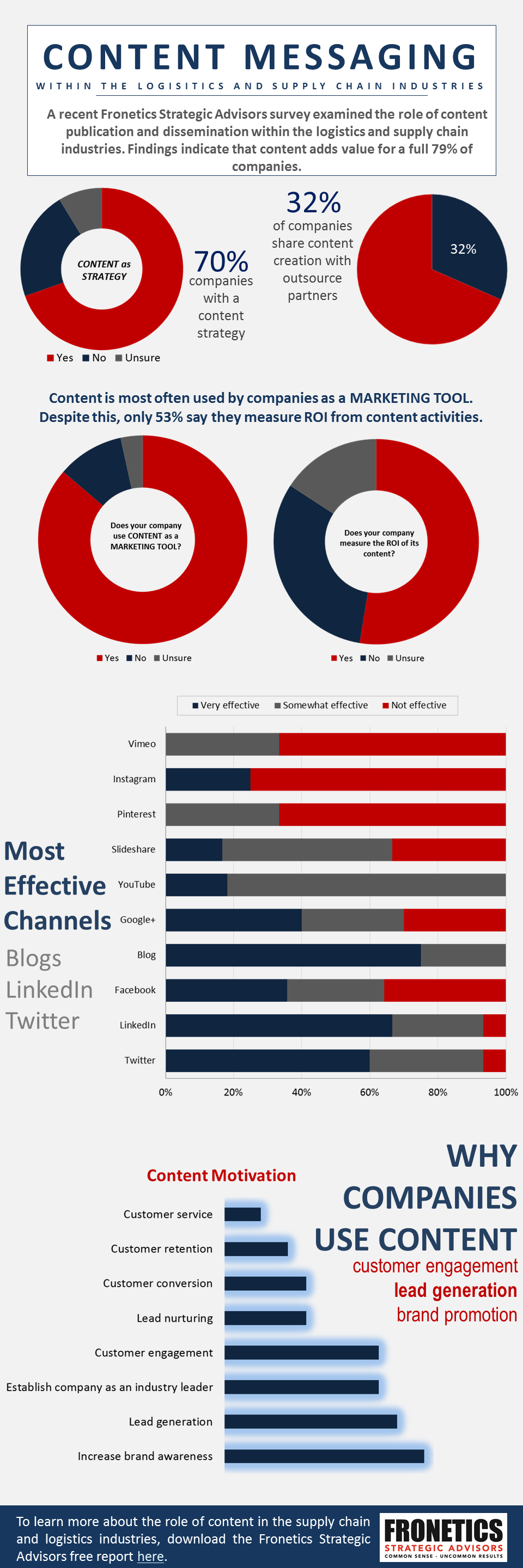
by Fronetics | Aug 27, 2015 | Blog, Content Marketing, Marketing, Social Media, Strategy
 Content marketing has become a key marketing strategy for many businesses. Statistics show that content marketing generates three times more leads than traditional marketing methods – and those leads cost an average of 62% less. At Fronetics, we’ve built our content marketing services around one goal – helping our clients grow. We’re harnessing the power of content to help our clients connect and engage with leads and prospects in meaningful ways. And our clients are enjoying faster growth and higher profits because of it.
Content marketing has become a key marketing strategy for many businesses. Statistics show that content marketing generates three times more leads than traditional marketing methods – and those leads cost an average of 62% less. At Fronetics, we’ve built our content marketing services around one goal – helping our clients grow. We’re harnessing the power of content to help our clients connect and engage with leads and prospects in meaningful ways. And our clients are enjoying faster growth and higher profits because of it.
How do we use content to support our clients in their business growth?
We create quality content that helps our clients connect with leads and customers in a number of ways. First, we appeal to and engage potential customers by creating relevant content that’s aligned with the needs of our client’s target audience. Then, we nurture those leads into customers by proving the value of our clients’ products and services. Even after they become customers, we work to create positive customer experiences that make it easy for them to recommend our clients to others.
Services offerings
Here’s a quick breakdown of some the service offerings included in our comprehensive approach to content marketing:
Content strategy
Research has shown that B2B and B2C companies with a documented content strategy in place are more effective than those without one.
At Fronetics, we work with our clients to create a content strategy individualized for their specific situation and needs. We learn about our client’s business, target customers, industry, and competition. We also conduct an audit of current content and digital assets. All of this information is used to create an effective content strategy.
Content creation
There is a lot of content out there. If you want your content to stand out and drive profitable customer action you need quality content. At Fronetics, we create quality content that is keyword-optimized. Also, unlike other firms, we don’t outsource content creation. By keeping all content creation in-house we are able to ensure a quality product.
Lead generation
Once we’ve helped our clients draw visitors to their website, we work to identify potential customers and manage their leads. We create and couple high-value content like white papers and eBooks, with strategic calls-to-action that direct visitors to landing pages expertly designed to convert website visitors into leads.
Lead nurturing and customer acquisition
We work closely with our clients to develop a lead nurturing strategy to convert leads into paying customers using email and marketing automation. By segmenting leads and sending them targeted content designed to catalyze engagement, we help our clients build relationships – and importantly, trust.
Social media
Social media is an incredible tool; however, for it to be effective it must be driven by strategy, be consistent, and must have someone managing the execution. At Fronetics, our social media strategists distribute content, curate content, engage your target audience, and monitor your social networks. We develop a social media strategy that aligns with your company’s goals. We analyze your competition, classify your target audience & cultural attributes, identify the influencers in your industry, recommend platforms, detail best engagement practices, create social media schedules, and identify specific tactics that deliver results. Through the proper execution of social media, your brand is given a voice and personality, and becomes more accessible to your target audience.
Analytics and reporting
At Fronetics we take a comprehensive data driven approach to marketing. Metrics measure success, drive strategy, and demonstrate ROI. We provide our clients with monthly marketing reports.
In short, our content marketing strategies drive success for our clients. The Fronetics team is comprised of strategists, marketing professionals, writers, designers, and experts in social media. Together we leverage our experience to increase brand awareness, position our clients as thought leaders, and drive meaningful engagement with prospects and customers – all with the goal of helping our clients grow.
Get in touch with us today for a free consultation to find out if our retainer services, full or half day workshops, or a personalized service offering is right for your business. See how Fronetics can help your business grow.

by Jennifer Hart Yim | Jul 27, 2015 | Blog, Marketing, Social Media, Supply Chain

Editor’s note: This is a guest post written by David Weaver. David has spent the past several years developing a best practice online marketing strategy for the inventory and supply chain division at INFORM GmbH.
Blogging has been around for years, yet some of the most basic questions regarding this communication method are still being asked. In fact, it has been around so long that some people are even asking the question “Is blogging dead?” My answer to that provocative question is of course no, but the blogging world is evolving. Despite the ever changing playing field, one of the most important success factors to blogging is to always keep the target audience in mind when writing an article. If content is not focused and targeted, a blog platform may actually experience a slow and agonizing death.
I started blogging in 2012, relatively late considering the concept has its roots in the 1990’s. Over the past three years, I have had the opportunity to network with some top bloggers as well as newcomers on the blogging scene. Whether I was the one asking or answering the questions, five common themes come up in the majority of blogging discussions I have been a part of. While the questions may be “basic” the answers, in my opinion, are not always easy:
-
What is the point?
This is a question I like to ask myself every time I write a new article. If I am not delivering either a fresh take on an existing topic or offering unique insights, I tend to rethink the purpose of the article. Regarding blogging in general, from a business perspective, numerous benefits can be realized:
- Expansion of online reach
- Lead generation
- Increased SEO presence
- Improved image
- Thought-Leadership
- Increased networking opportunities
-
Is it too late to start?
No. I recently attended a content marketing event, and next to “ephemeral media”, the topic of influencer marketing was heavily featured. The majority of attendees agreed that everyone is an influencer with a network of friends, family, colleagues and acquaintances. Blogging serves as outlet for the expression of this influence.
The good news is that there are a multitude of blogs already out there looking for contributors, so you don’t have to create something from scratch. As an example, if you are a supply chain professional wanting to share your experience on the topic of supplier relationship management, simply type in “supply chain blog” in Google and you will find several platforms that would be happy to hear from you.
-
How do I stay motivated/come up with ideas?
Next to actually starting to write, one of the most difficult tasks is writing a new article when the previous article you posted received little to no attention. This is often the case in the early stages of the blogging process and can be very discouraging. A discouraged writer will consequently have trouble in the idea development stage. Some ways to stay motivated and keep the creative juices flowing include:
- Brainstorming with family and friends
- Scanning Social Media for trending topics
- Asking readers and other industry experts for feedback
- Starting a blog series that will leave readers wanting more
- Varying your content and include videos, infographics and guest bloggers
If you are new to blogging, always keep in mind that the journey is long and developing a following/readership will take time. Don’t give up!
-
How often should I post?
The answer to this question is easy: it depends. There are differing opinions on this subject and the general rule of thumb is also vague, namely “post regularly.” My stance on the matter is that quality trumps quantity. If an article seems forced or does not bring something new to the table, it is best to allow the idea to mature and deliver a comprehensive article at a later date instead of posting to meet a deadline.
When starting out, it is best to set achievable goals i.e. “I will post one article per week.” On my first blog project, I set the goal of publishing an original article every Monday. This provided consistency for the readers and gave me time to develop new ideas.
-
How do I deal with critics?
I believe the fear of putting oneself out on the web is one of the highest hurdles to publishing articles on blog platforms. The fact is, there will be people that disagree with your opinion. The deciding factor is how you deal with the criticism. Getting into a name-calling, heated argument with an internet troll is not recommended and can only lead to a damaged reputation. With regard to constructive criticism and differing opinions, it is important to acknowledge the difference and remain professional. This includes respecting the other person’s opinions. In the end, it may be best to “agree to disagree”.
Closing thoughts
Aside from the purposes mentioned under “What is the point,” I use various blog platforms as a way to start a conversation and learn from others. Blogging is time consuming and hard work, but in my opinion, the benefits far outweigh the costs. My questions to you: If you are not blogging, why not? If you are blogging, what are some open questions you have?

by Fronetics | Jul 9, 2015 | Blog, Data/Analytics, Marketing, Social Media
 In what seemed like a curious social experiment, KLM Royal Dutch Airline harnessed the popularity of social media and launched their “Meet and Seat” program in 2012. The service gives passengers the option to link their social media profiles to their boarding information during the ticket purchase process. Once a traveler’s profile is linked, they gain access to other social profiles of travelers that have also opted in to the service. Underling the concept is the notion that travelers will choose seatmates based on the profiles of users with similar business or leisure interests. While KLM reports that over 50,000 flyers have utilized the service since its inception – enough for KLM to deem the program successful – what’s discernable from KLM’s efforts is that social media has become a major player in today’s business world.
In what seemed like a curious social experiment, KLM Royal Dutch Airline harnessed the popularity of social media and launched their “Meet and Seat” program in 2012. The service gives passengers the option to link their social media profiles to their boarding information during the ticket purchase process. Once a traveler’s profile is linked, they gain access to other social profiles of travelers that have also opted in to the service. Underling the concept is the notion that travelers will choose seatmates based on the profiles of users with similar business or leisure interests. While KLM reports that over 50,000 flyers have utilized the service since its inception – enough for KLM to deem the program successful – what’s discernable from KLM’s efforts is that social media has become a major player in today’s business world.
With a reported 8 out of 10 businesses using social media in the communication between their brand and their audiences, companies are spending more marketing dollars on social efforts with increasing regularity. But with its fairly recent introduction to the business world, many companies are struggling to determine whether their efforts, and their investments, are paying off. Fortunately, by focusing on a few key metrics, your company can start to understand which of your social efforts are adding value and, just as important, which ones are not.
Here are the 4 social metrics that matter:
Source Reports
The most common remark about measurement you’ll hear social media marketing experts say is that social media efforts shouldn’t be solely measured in likes and follows. It’s hard to connect the number of likes and follows to financial business metrics, so thinking about the success of your channels in different terms gives a more insightful report about how your social channels are performing. HubSpot recommends tracking the network source of your web traffic, leads, and customers to determine how your social platforms are performing.
Track: # of visits, leads, and customers for each of your social channels
Engagement and Amplification
“No man is an island,” wrote John Donne in his poem. His summation about the nature of humans is quite evident in social media. Indeed, one of the greatest benefits of social media is that it is by its very nature, social. For companies, social media exponentially expands the reach of its content by playing on the communal nature of these networks. If a company has 2,000 followers on Twitter, and each of them shared that company’s content with 200 of their followers, the amplification of its content has expanded to 200,000 users. Your business can leverage these immense networks by maintaining consistency in the quality and value of your content as this strategy will naturally inspire followers to share and repost your content. Track the types of content that drives the most amplification and identify trends in popular publishing times, then refine your efforts based on your analysis. Remember, as a business using social media, your end goal is action, not eyes. In other words, what’s important to your efforts is engagement. Pay close attention to how your followers are interacting with your content.
Track: # of Facebook Post Shares, # of Retweets, # of Twitter Mentions
Lead Generation
Put simply, lead generation activity lets you know whether your social content is generating leads and creating opportunities for your business. At the end of the day, your social efforts don’t matter if they aren’t playing a part in driving new business. Of particular value to your business is your conversion rate. Knowing how often content consumption results in a new lead will help you to build a more successful overall content strategy. Is your new infographic converting visitors to leads at a higher rate than your verbose Facebook posts? That might be a sign that your audience responds better to image-heavy content.
Track: # of form submissions, # of email subscribers, conversion rate
Return on Investment
If one of your company’s objectives for its social media participation is to drive growth, your company’s ROI calculation is one of the most important measurements of your social efforts. This measurement determines what impact your social content is having on customer acquisition and sales. Just as you would for all other marketing efforts, you need to know whether or not the investment you’re making in social media is producing a positive return for your business. To find your investment, start by calculating the total of your investment, your overhead factor, and your miscellaneous costs. To calculate your return, you’ll need to know your leads per month, your lead conversion rate, your average lifetime customer value, and average profit margin. Let’s take a look at how those factor into your ROI calculation in the example below.
To Calculate Investment
- Multiply the hours per month needed to create the content by the hourly rate of the employees used to create the content.
- Multiply the result by the overhead factor, taking into account rent, insurance, utilities, etc. (typically 50%)
- Add all other costs, such as design fees, hosting fees, subscriptions, software, etc. You may choose to allocate them to a specific piece of content or amortize them monthly and spread the costs evenly across each piece of content.
Calculation: At 40 hours/month at $40/hour to produce a corporate blog, multiplied by a 50% overhead factor. Add in $1k/month for design, $100/month for hosting, and $100/month for miscellaneous fees.
Total Investment in Monthly Blog = $3,600
To Calculate Return
Multiply your leads per month by your lead conversion rate, average lifetime customer value, and average profit margin.
Calculation: You collect 25 leads a month from your blog. At a 20% lead conversion rate, you’ll generate five new customers. Assume a $3,000 average lifetime customer value and a 30% average profit margin.
Total Monthly Blogging Return = $4,500
To Calculate Return on Investment
Subtract the investment from the return. Then, divide by the investment.
Calculation:
$4,500 – $3,600 = 900
900/3,600 = .25
ROI = 25%
Nearly 70% of communications professionals report dissatisfaction in how they’re measuring their social efforts. That’s understandable, social can be cumbersome to analyze. But looking at activity through the lens of your business objectives should really get to the heart of why your company participates in social media. In your work to distinguish your company from the thousands of others in the sea of social, seek to create rich and robust social experiences for your followers by connecting them with relevant and valuable content. Then measure that user activity and engagement to see how it is helping grow your business.
Fronetics Strategic Advisors is a leading management consulting firm. Our firm works with companies to identify and execute strategies for growth and value creation.
Whether it is a wholesale food distributor seeking guidance on how to define and execute corporate strategy; a telematics firm needing high quality content on a consistent basis; a real estate firm looking for a marketing partner; or a supply chain firm in need of interim management, our clients rely on Fronetics to help them navigate through critical junctures, meet their toughest challenges, and take advantage of opportunities. We deliver high-impact results.
We advise and work with companies on their most critical issues and opportunities: strategy, marketing, organization, talent acquisition, performance management, and M&A support.
We have deep expertise and a proven track record in a broad range of industries including: supply chain, real estate, software, and logistics.


by Fronetics | Jun 29, 2015 | Blog, Content Marketing, Marketing

In real estate sales, you want people to find your properties, like what they see, and ultimately be moved to purchase. In other words, you want to attract visitors, convert visitors to leads, and convert leads to deals. Innovative luxury real estate firms are finding ways to leverage digital tools to guide more buyers down that path to purchase.
Without a doubt, luxury real estate buyers are a diverse bunch. “One day I have to know all about feng shui, and the next I have to be able to talk to a pig farmer from Iowa,” says one luxury real estate sales executive. “I’m like a chameleon.” And luxury buyers are trending even more heterogeneous – both geographically and demographically. What’s more, they are more connected than ever before due to the proliferation of digital technologies that enable buyers and properties to connect with one another in new and different ways. It’s clear that technology is a strategic way for properties to get in front of more potential buyers; moreover, it creates competitive opportunities for luxury real estate firms that are prepared to adapt to this new landscape.
Many luxury real estate firms are already using digital and social media to carry the lifestyle brand they’ve built around their properties into the online world. With the use of inbound marketing – think of it as the intersection of valuable content, social media, and lead generation – they are creating new virtual “touch points” to connect with affluent, hyper-connected luxury buyers.
What we know about luxury buyers is that they are likely to do purchasing research online; they are influenced by peers and their interactions with websites, mobile apps, and social networks. We also know that 93 percent of all online experiences begin with a search engine, and that 75 percent of searchers don’t move past the first page of search results. Through publishing relevant, quality content, inbound marketing gives luxury real estate marketers the tools needed to make certain their properties are being found online.
According to Sprout Social’s Consumer Engagement Index, which ranks industries by which ones receive the most engagement from customers on social media, the real estate industry is second overall in terms of inbound engagement relative to audience size. But how exactly, are real estate firms using inbound marketing to sell luxury properties? The majority of real estate firms, through the use of social media and blogs, are seeking to draw visitors to a property’s website. Others are putting social media to use for functional purposes such as communicating real-time updates to potential buyers about project timelines or changes in sales office hours.
Of their recent inbound marketing efforts, the New York City-based Corcoran Real Estate Group says they have realized significant benefits. A spokesperson for the company says, “The main thing we’ve seen is that the quality of the referral traffic back into our main website has significantly improved. And not only are we seeing more traffic coming in, but visitors coming in from social media sites are staying longer and looking at more things — something we had also seen with search engines, but not in such large numbers.”
Corcoran isn’t alone in their use of emergent technology and social media strategy to ensure maximum exposure for their luxury properties. Long & Foster’s Luxury Homes e-magazine showcases luxury properties through an extensive online campaign targeting luxury clients. The online campaign drives traffic to the e-book and the website. Similarly, residential homebuilder Polygon Homes currently connects their available luxury properties to over 6,000 people through a multitude of social media platforms. The company’s social followers are linked to relevant articles, outside press coverage, and traditional marketing resources that serve to build on the lifestyle brand of each property.
Real estate firms are also recognizing value in blog content as way to attract visitors and nurture leads. For example, One Riverside Park, a newly-constructed New York City building with luxury condo units for sale, uses their blog to highlight not only their property, but also additional relevant information such as neighborhood amenities, seasonal local weather, and area restaurants.

Boston is experiencing a substantial upsurge in construction of high-end luxury residential units. The Boston Globe reports that “more than 8,000 luxury residential units are expected to be built in Boston during the next three years, doubling the supply of units built in large, luxury complexes since 1960.” And local real estate firms are using inbound marketing to sell those luxury units. Seventy percent of the luxury units at the 60-story Millennium Tower under construction in Boston’s Downtown Crossing neighborhood have been sold. Millennium Partners, the firm responsible for the marketing and sales of the luxury units, has embraced inbound marketing as part of their overall marketing strategy. The firm currently has over 13,500 likes from users on social media. Millennium Tower’s Facebook page not only shares construction progress, sales information, and related press coverage, but neighborhood amenities, industry trends, and an array of visual content that’s more often than not shared widely by followers.

Beyond increased prospect engagement and driving more traffic to their websites, other firms are using inbound marketing as a way to gauge market reception of traditional print marketing materials and the general perception of properties; knowing what resonates online through focus group-like participation is valuable information that marketers are finding bolster their offline marketing efforts. In that same vein, while real estate marketers are realizing value from creating and sharing content, they’re also recognizing the importance of analytics and measurement.
Real estate marketers are using inbound marketing metrics to determine what type of content is inspiring current customers and pulling in new leads. These firms are looking at how their online numbers compare daily, weekly, and monthly and planning content accordingly. Specifically, they’re monitoring measurements like page views, video views, document views, content downloads, and social conversations. They’re examining how sales are impacted by social media and digital content by tracking metrics such as referrals from Facebook, Twitter, Pinterest. Knowing all of these metrics allows for a more nimble real estate marketing strategy– one that’s able to rapidly adapt and engage potential buyers in real-time.
Inbound marketing is a new approach to an old strategy – one that’s putting real estate marketers in charge of the way potential buyers interact with their properties. These marketers are guiding prospects down the road of purchase through lead generation campaigns – capturing emails and other contact information through blog subscriptions and form completions for content downloads. They’re strengthening branding efforts for their properties by building robust online social communities and employing previously untapped sources of referrals. Real estate marketers who use inbound marketing are seeing their properties rank higher in search engine results pages, experiencing a steady increase in their website visitors, and increasing conversion rates of leads and sales. Taking into consideration the changing demographics and increased digital connectedness of luxury real estate buyers, firms that seek to broaden the reach of their marketing efforts through new and emergent technologies will aggressively position themselves as strong competitors in an increasingly competitive luxury property market.


by Fronetics | Mar 31, 2015 | Blog, Content Marketing, Logistics, Marketing, Strategy, Supply Chain
Chief among the determinants of success and failure of companies around the world is the ability to effectively communicate ideas and information. Both internal and external communication play critical roles in advancing business objectives. To be sure, connecting with audiences to convey messaging is a central component of building a solid business strategy. Recent cultural shifts and advances in digital technology have pushed aside traditional methods of communication and given way to the rise of a new type of communication strategy– one that puts content at the very center.
Fronetics Strategic Advisors conducted a survey to better understand the role and use of content within the logistics and supply chain industries.
The survey found that companies within the logistics and supply chain industries are using content as a marketing tool and are realizing benefits.
Survey respondents were asked to identify the goals of their company’s content strategy. The top three goals identified were:
- Increasing brand awareness
- Lead generation
- Establishing the company as an industry leader.
To learn more, check out our infographic, or download the report.


 Content marketing has become a key marketing strategy for many businesses. Statistics show that content marketing generates three times more leads than traditional marketing methods – and those leads cost an average of 62% less. At Fronetics, we’ve built our content marketing services around one goal – helping our clients grow. We’re harnessing the power of content to help our clients connect and engage with leads and prospects in meaningful ways. And our clients are enjoying faster growth and higher profits because of it.
Content marketing has become a key marketing strategy for many businesses. Statistics show that content marketing generates three times more leads than traditional marketing methods – and those leads cost an average of 62% less. At Fronetics, we’ve built our content marketing services around one goal – helping our clients grow. We’re harnessing the power of content to help our clients connect and engage with leads and prospects in meaningful ways. And our clients are enjoying faster growth and higher profits because of it.







